Have you ever pondered over those charismatic creatures that can hide themselves from your sight just like a leaf in the forest? Chameleons, such as the most colorful chameleon with a nose flap for eyes, are unique reptiles that have fascinated human interest for ages. However, a Chameleon pet may not suit every person.
Content Table
This blog looks at the chameleon kingdom, explaining various types, lifespan, nutritional requirements, and the scientists’ research on how the chameleons change color. By the end, you’ll know all about chameleons. You can choose whether you will have this unique reptile as your next pet.
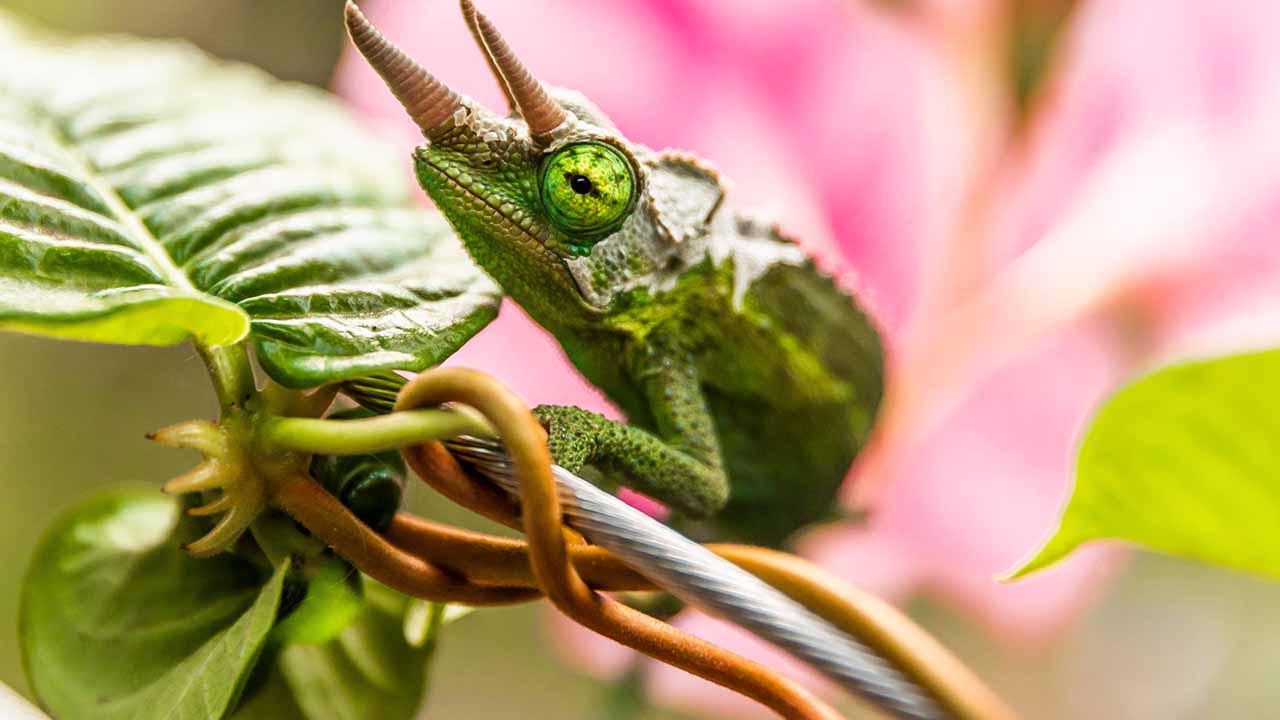
Chameleon pet
Chameleon Pet
Chameleons are a type of lizard with the ability to adapt their appearance to the environment. They are a species of tree-dwelling reptiles mainly found in Africa, Madagascar, southern Asia, and southeastern Europe. This class of reptiles consists of over 200 different species that are all characterized by morphological features and adaptations.
Chameleons are not like ordinary pets you always embrace. They belong to the species that do not like people handling them. Nevertheless, they are astounding to watch as their colors change frequently and they display some interesting behaviors. If you are a seasoned lizard keeper seeking adventure, then a chameleon must be the greatest pet for you.
Simple Introduction Of the Chameleon Family
Appearance: Chameleons may have a long or short tail and body with diverse colors. Some animals are very tiny, while others can measure over two feet long. They feature luxuriously long tails which can be used to stably hold onto the branches. They are easy to identify because of their unique capability of changing hue. Chameleons change color to disappear in the background, regulate their body temperature, and talk to other chameleons.
Diet: Chameleons are insectivores that eat insects. Their menu mainly contains groups made from insects such as crickets, flies, and worms.
Habitat: Chameleons can be found in different kinds of ecosystems, such as rainforests, deserts, and savannas. They spend a lot of their time on tree branches and bushes.
Lifespan: The longevity of chameleons depends on the species, but the average lifetime in captivity is 5–10 years.
Types of Chameleons
There are over 200 species of chameleons, each with unique characteristics and adaptations. Here are some of the most popular types of chameleons kept as pets:
1. Veiled Chameleon (Chamaeleo Calyptratus)
| This is the common type of chameleon pet, although its popularity may be due to its hardiness and widespread availability. They originate from Yemen and Saudi Arabia and can be as long as 24 inches. The species veiled chameleons are usually associated with their crests (also termed “helmets”) on the head, and they are larger in males. They can be found in different hues like green, brown, or yellow. | 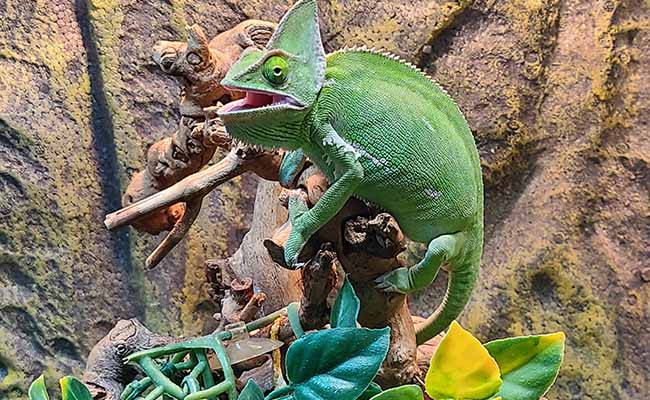 |
2. Panther Chameleon (Furcifer Pardalis)
| The popularity of Panther chameleons is another reason why people fancy them as pets. They are natives of Madagascar and flaunt a diverse range of colors, patterns, and sizes. Panther chameleons have distinctive features, one being the quick and drastic color changes that they are capable of. On the other hand, their constitution is very fragile, and they are more difficult to cultivate than veiled chameleons. | 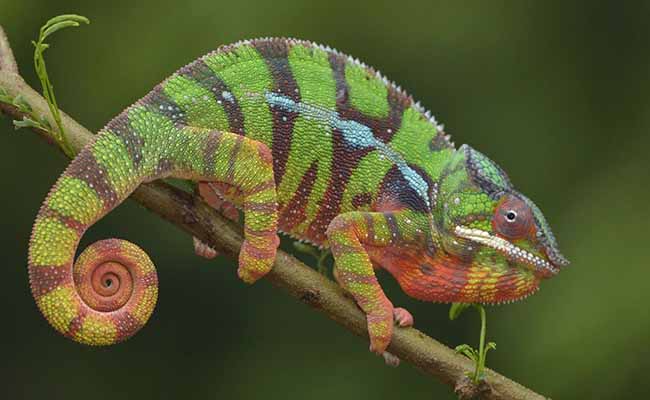 |
3. Jackson’s Chameleon (Trioceros jacksonii)
| Jackson’s chameleon possesses extravagant attributes with three horn-like nuclei, found only on the head. They are the indigenous animals of Africa and can measure up to 36 inches as an adult. These chameleons are largely arboreal and can be commonly found in trees and shrubs. They are carnivores and their food very much comprises crickets, flies, and earthworms. | 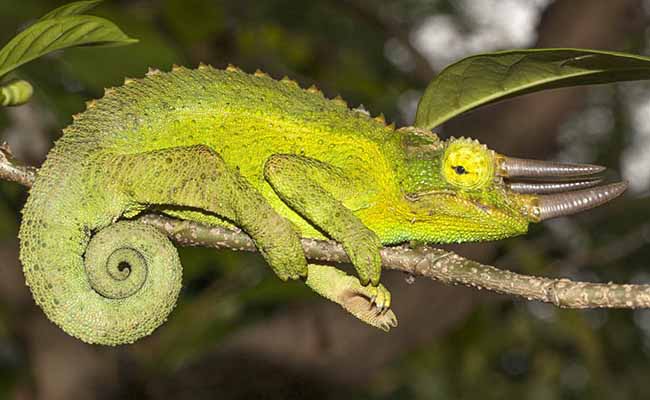 |
4. Senegal Chameleon (Chamaeleo Senegalensis)
| Senegal chameleons are a species of chameleons that occur in the African region, and their size can differ from small to medium. They are usually not so brightly colored as compared to their other family members; however, they are moderately easy to keep as pets. Senegal Chameleons are the most suitable choice for beginner chameleon keepers. | 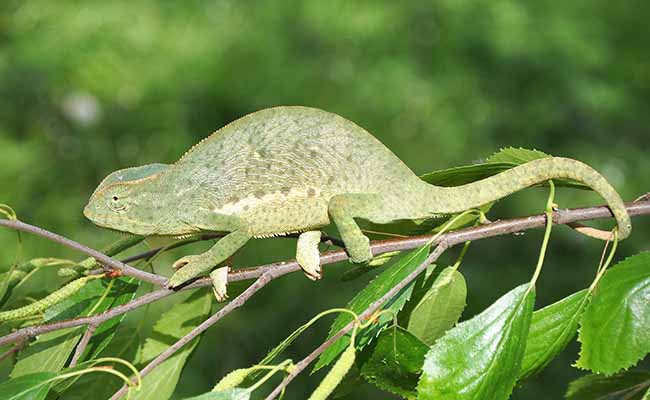 |
5. Carpet Chameleon (Furcifer lateralis)
| Carpet chameleon is a common pet among reptile lovers. They are naturally Madagascar habitats that come in multiple colors and patterns. The carpet chameleons are famous for their quiet nature and their ability to live in many types of habitats. | 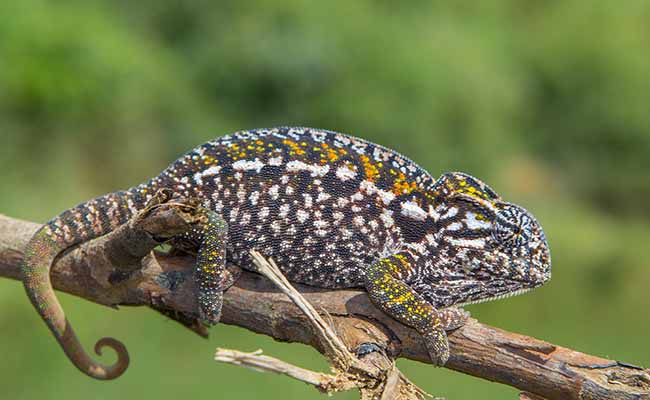 |
How Long Do Chameleons Live
Chameleons come in all shapes and sizes, and that goes for their lifespans too. Some tiny chameleon species, like the Pygmy Chameleon, only live for 1–3 years. On the other hand, larger species like the Parson’s Chameleon can live up to 12–15 years or even longer in captivity with exceptional care.
A shorter lifespan can affect chameleons in a few ways:
- Reproductive Strategy: Species with shorter lifespans often mature quicker and reproduce earlier to ensure they pass on their genes before succumbing to the challenges of the wild.
- Stress and Health: The constant pressure of survival in the wild can take a toll on a chameleon’s health and well-being.
- Limited Lifelong Learning: With less time to learn and adapt, shorter lifespans may limit a chameleon’s ability to thrive in its environment.
On the other hand, a longer lifespan in captivity allows chameleons to:
- Develop More Complex Behaviors: Since captive chameleons have a longer time to learn and develop, they may perform more complex behaviors compared to their wilds.
- Become More Docile: Although they are not the type of pets that like to be cuddled, they become more familiar with humans as they live longer in an observable way.
- Reproduce Multiple Times: Species that can have a reproductive lifespan in captivity can contribute to captive breeding programs more times than they would in the wild.
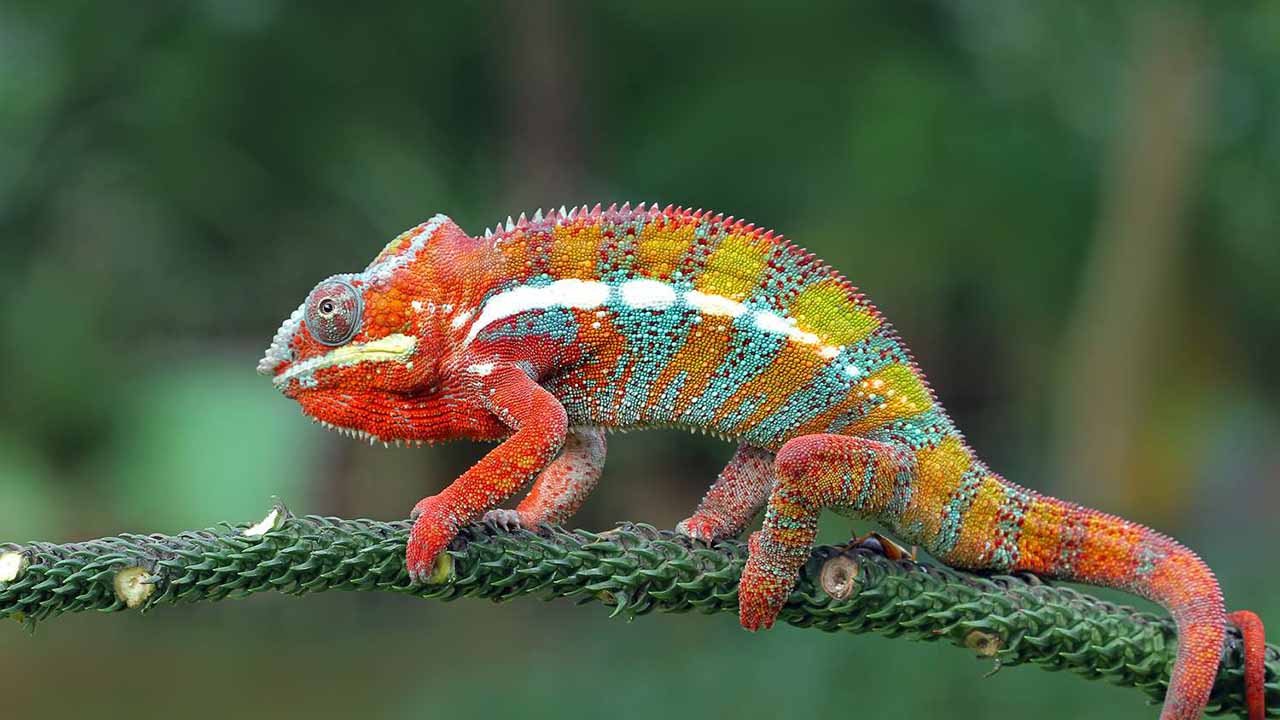
What do chameleons eat
What Do Chameleons Eat
Chameleons are insectivores that thrive on a varied diet of feeder insects. Crickets are a staple food for many chameleon species, but they shouldn’t be the only option. Offer a variety of insects like flies (fruit flies, houseflies, blow flies), worms (mealworms, super worms, hornworms, silkworms), and roaches (Dubia roaches, discoid roaches) to provide a well-rounded diet.
Habitat
Chameleons are a very adaptable group of animals that are discovered around jungles in many continents like Africa, Madagascar, southern Asia, and Europe. Some of them build their nests in dense rainforests, others live in drier savanna areas, and others even construct their homes near water resources in deserts.
Environment
To survive in captivity, chameleons demand adequately large enclosures with the appropriate vertical climbing space, UVB lighting for heat and vitamin D, temperature gradients, ventilation, and substrate for digging (genus-specific). The plants (live or artificial) provide climbing spots and hiding places, and the supply system (dripper or reptile humidifier) ensures moisture levels.
How do Chameleons Change Color
Chameleons change color due to a remarkable interplay between special cells and hormones. These cells, called chromatophores, contain pigment sacs that can expand and contract. When a chameleon experiences internal or external changes, its nervous system triggers the release of specific hormones. These hormones cause the pigment sacs in the chromatophores to expand or contract, resulting in the chameleon’s dramatic color shifts. This color change serves several purposes including camouflage, communication with other chameleons, and temperature regulation.
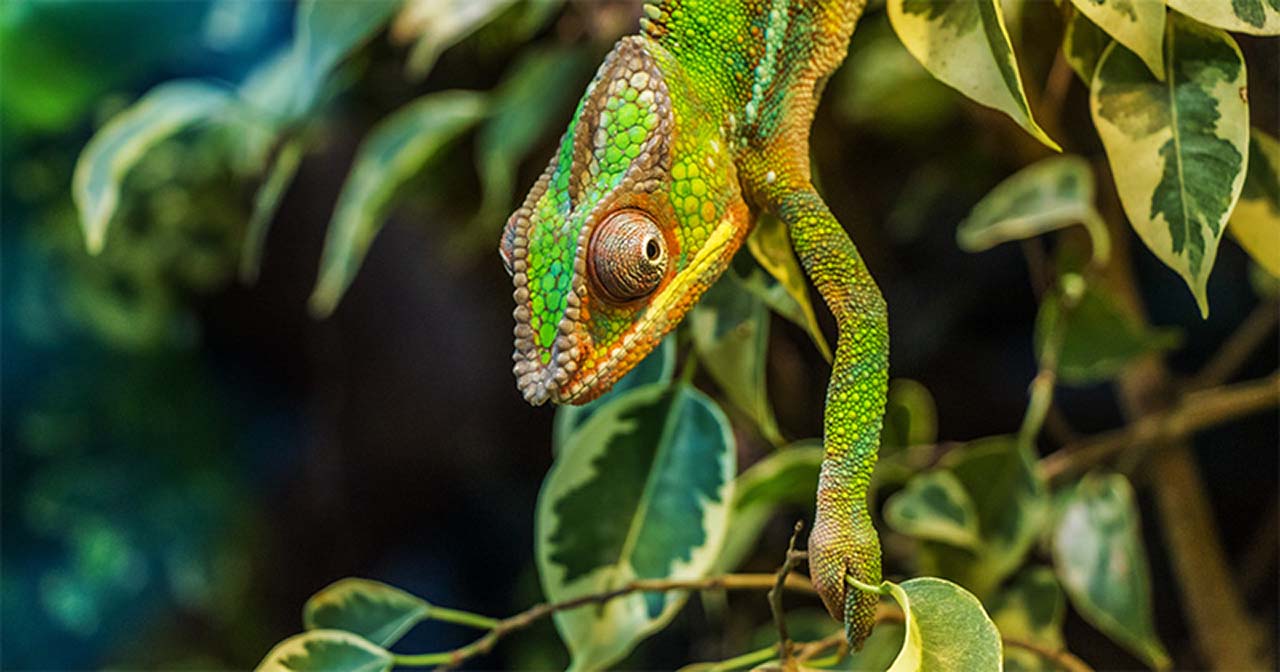
Chameleon changing color
The Final Word
Lastly, chameleons are amazing lizards that have amazing skills and requirements. Their forms and sizes differ quite a lot, and the most common pets of chameleon species are veiled panthers and Senegal chameleons. No matter the fact they cannot be touched as pets, the bright color-changing phenomenon and living among the trees make them exciting to watch. Don’t forget – if you’re an experienced reptile keeper already ready for such a challenge, then a chameleon could be the perfect pet for you! Make sure that the animals receive the best care possible.


Leave a comment